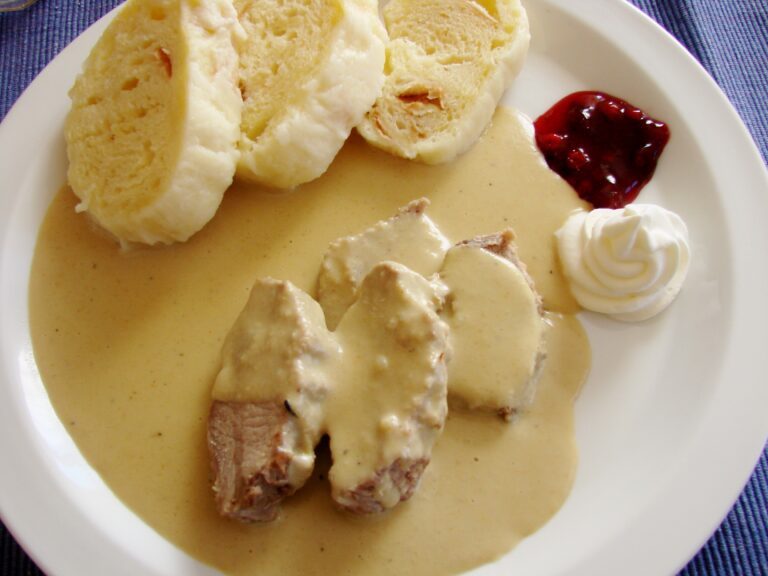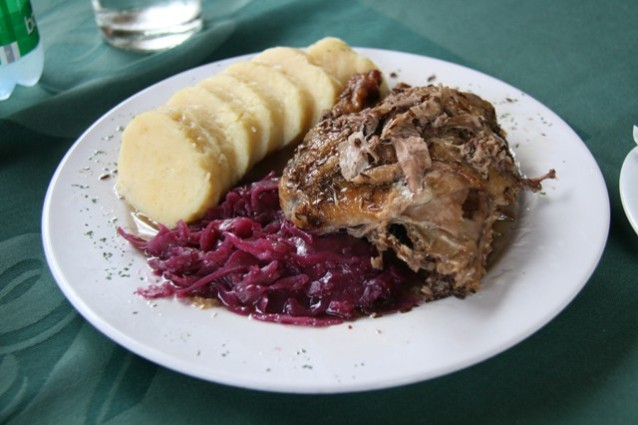Introduction: Traditional Breakfast in Czechia
Czech breakfasts are hearty, filling, and delicious. They are a perfect way to start your day, whether you are a tourist or a local. The traditional breakfast options in Czechia are quite varied, ranging from sweet pastries to savory sandwiches and everything in between. In this article, we will take a closer look at some of the most popular traditional breakfast options in Czechia.
Koláč: The Sweet Pastry Breakfast Delight
Koláč is a sweet pastry that is a popular breakfast option in Czechia. It is made with yeast dough and filled with either sweet or savory toppings. The sweet toppings can range from fruit compote to poppy seed filling, while the savory toppings can include cheese or ham. Koláč is often served with a cup of coffee or tea and is a great way to start your day with a little bit of sweetness.
Chlebíčky: The Czech Open-Faced Sandwiches
Chlebíčky are open-faced sandwiches that are a popular breakfast option in Czechia. They are made with crusty bread and topped with a variety of ingredients, including ham, cheese, vegetables, and spreads like mayonnaise or mustard. Chlebíčky are often served at social gatherings or as a light breakfast option. They are a great way to try a variety of flavors in one bite.
Palačinky: The Czech Version of Pancakes
Palačinky is the Czech version of pancakes and is a popular breakfast option in Czechia. They are made with a thin batter and cooked on a griddle. Palačinky can be served sweet or savory, with sweet fillings like fruit jam or Nutella, or savory fillings like cheese or ham. Palačinky is often served with whipped cream and fresh fruit on top.
Šunka a Vajíčka: Ham and Eggs Czech Style
Šunka a Vajíčka is a traditional Czech breakfast option that consists of ham and eggs. The ham is usually grilled or fried and served with scrambled eggs. It is often served alongside bread or a small salad. Šunka a Vajíčka is a simple and filling breakfast option that is perfect for those who want to start their day with a protein-packed meal.
Utopenci: A Traditional Sausage Breakfast
Utopenci is a traditional Czech breakfast option that consists of pickled sausages. The sausages are often served with onions, peppers, and vinegar. Utopenci is a popular breakfast option in Czech pubs and is often served with a cold beer. It is a perfect breakfast option for those who want to try something a little bit different.
Omelette with Klobása: Czech Sausage Omelette
Omelette with Klobása is a popular breakfast option in Czechia. It is a classic omelette that is filled with Czech sausage, onions, and peppers. The omelette is often served with bread or a salad. Omelette with Klobása is a great way to start your day with a protein-packed meal that will keep you full until lunchtime.
Müsli: A Healthier Breakfast Option in Czechia
Müsli is a healthier breakfast option that is popular in Czechia. It is made with oats, nuts, seeds, and dried fruit. It is often served with yogurt or milk and is a great way to start your day with a healthy and nutritious meal. Müsli is perfect for those who want to start their day with a light and healthy breakfast option.







